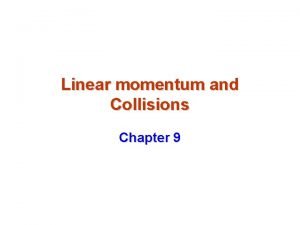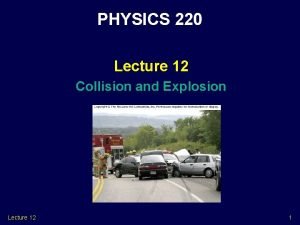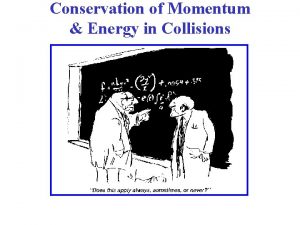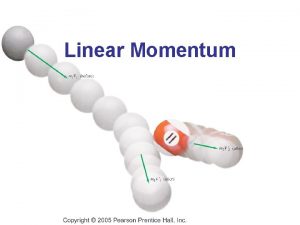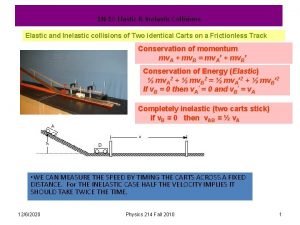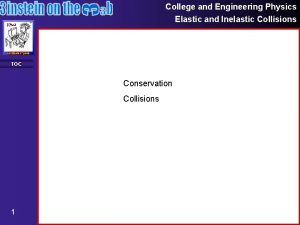Elastic and Inelastic Collisions Elastic Collision If 2







- Slides: 7

Elastic and Inelastic Collisions

Elastic Collision �If 2 colliding objects are very hard and no heat is produced in the collision, KE is conserved as well as momentum � ½ m 1 v 12 + ½ m 2 v 22 = ½ m 1 v 1’ 2 + ½ m 2 v 2’ 2 �On a molecular level, most collisions are elastic, however on a large scale most are not totally elastic (some are very close) �In elastic collisions, the 2 objects will rebound from one another

Solving Elastic Collision Problems �Since 2 equations apply for elastic collisions, we can solve for two variables in a problem �If the two equations are combined we also get a 3 rd equation �In any elastic collision, the speed of the particles after the collision has the same magnitude but opposite direction as before (regardless of mass) va - vb = -va’ + vb’

Example �A proton of mass 1. 01 amu is traveling 3. 6 x 104 m/s. It collides elastically with a He nucleus (4. 0 amu) at rest. What are the velocities of each particle after the collision?

Inelastic Collisions �Ones in which KE is not conserved �The KE is not lost, just changed to some other form of energy such as heat �KE is usually less after collisions �In explosions, KE is usually greater �Any collision where objects stick is elastic

Example �A 10000 kg railroad car traveling at 24. 0 m/s strikes an identical car at rest. The two cars couple together. How much of the car’s original KE was transformed to thermal energy?

Example The ballistic pendulum is a device used to measure the speed of a projectile, such as a bullet. If a projectile, of mass 5 g is fired into a large wooden block of mass 500 g which is suspended like a pendulum. If the pendulum raises to a height of 25 cm, what was the speed of the projectile?

